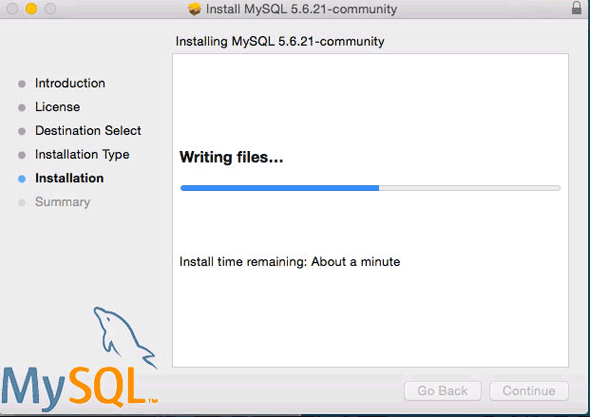For a list of macOS versions that the MySQL server supports, see https://www.mysql.com/support/supportedplatforms/database.html.
MySQL for macOS is available in a number of different forms:
- MacOS might be the easiest platform to install MySQL on. To do so, simply download the MySQL installation package from the MySQL Download site. I like to use the third link (the DMG). Once downloaded, run the package. The package will ask you a few questions and you can easily just select the default choice Continue reading Install mySQL on macOS.
- There are different ways to download Mac OSX 10.10 Yosemite on different computer brands. We’ve compiled the steps for a Mac as well for Windows. Downloading Apple Mac OSX 10.10 Yosemite from Apple Store. The users can still find Mac OS X Yosemite Download here and its available for free download. After the completion of the download, the OZX.
- Yosemite even gives you the ability to make iPhone calls on your Mac. “Yosemite is the future of OS X with its incredible new design and amazing new apps, all engineered to work beautifully with iOS,” said Craig Federighi, Apple’s senior vice president of Software Engineering.
Native Package Installer, which uses the native macOS installer (DMG) to walk you through the installation of MySQL. For more information, see Chapter 2, Installing MySQL on macOS Using Native Packages. You can use the package installer with macOS. The user you use to perform the installation must have administrator privileges.
Compressed TAR archive, which uses a file packaged using the Unix tar and gzip commands. To use this method, you 'to open a Terminal window. You do not need administrator privileges using this method, as you can install the MySQL server anywhere using this method. For more information on using this method, you can use the generic instructions for using a tarball, Installing MySQL on Unix/Linux Using Generic Binaries.
In addition to the core installation, the Package Installer also includes Chapter 3, Installing a MySQL Launch Daemon and Chapter 4, Installing and Using the MySQL Preference Pane, both of which simplify the management of your installation.
For additional information on using MySQL on macOS, see Chapter 5, General Notes on Installing MySQL on macOS.
macOS Update: While these instructions still work, there are new posts for recent versions of macOS, the latest being Install Apache, PHP, and MySQL on macOS Mojave.
SQLPro for MySQL is a simple, yet powerful MySQL manager for Mac OS X. The interface and workflow are similar to what you are used to, with several improvements. You can execute multiple queries and have the results for multiple tables at once. The app is native and ready for Yosemite, but still supporting Mavericks.

PHP Update: Mac OS X El Capitan comes pre-installed with PHP version 5.5 which has reached its end of life. After you complete this post, you should upgrade PHP on Mac OS X.
Note: This post is for new installations. If you have installed Apache, PHP, and MySQL for Mac OS X Yosemite, read my post on Updating Apache, PHP, and MySQL for Mac OS X El Capitan.
Mac OS X runs atop UNIX. So most UNIX software installs easily on Mac OS X. Furthermore, Apache and PHP come packaged with Mac OS X. To create a local web server, all you need to do is configure Apache and install MySQL.
I am aware of the web server software available for Mac OS X, notably MAMP. These get you started quickly. But they forego the learning experience and, as most developers report, can become difficult to manage.

Running Commands
First, open the Terminal app and switch to the root user so you can run the commands in this post without any permission issues:
Enable Apache on Mac OS X
Verify It works! by accessing http://localhost
Enable PHP for Apache
First, make a backup of the default Apache configuration. This is good practice and serves as a comparison against future versions of Mac OS X.
Now edit the Apache configuration. Feel free to use TextEdit if you are not familiar with vi.
Uncomment the following line (remove #):
Restart Apache:

You can verify PHP is enabled by creating a phpinfo() page in your DocumentRoot.
The default DocumentRoot for Mac OS X El Capitan is /Library/WebServer/Documents. You can verify this from your Apache configuration.
Download Mysql Mac Yosemite Installer
Now create the phpinfo() page in your DocumentRoot:
Verify PHP by accessing http://localhost/phpinfo.php
Install MySQL on Mac OS X El Capitan
Download and install the latest MySQL generally available release DMG for Mac OS X.
The README suggests creating aliases for mysql and mysqladmin. However there are other commands that are helpful such as mysqldump. Instead, you can update your path to include /usr/local/mysql/bin.
Note: You will need to open a new Terminal window or run the command above for your path to update.
Finally, you should run mysql_secure_installation. While this isn't necessary, it's good practice to secure your database.
Connect PHP and MySQL
You need to ensure PHP and MySQL can communicate with one another. There are several options to do so. I do the following:
Additional Configuration (optional)
The default configuration for Apache 2.4 on Mac OS X seemed pretty lean. For example, common modules like mod_rewrite were disabled. You may consider enabling this now to avoid forgetting they are disabled in the future.
Mysql For Mac
I edited my Apache Configuration:
Download latest softwares. I uncommented the following lines (remove #):
If you develop multiple projects and would like each to have a unique url, you can configure Apache VirtualHosts for Mac OS X.
If you would like to install PHPMyAdmin, return to my original post on installing Apache, PHP, and MySQL on Mac OS X.
Download Mysql Mac Yosemite High Sierra
Find this interesting? Let's continue the conversation on Twitter.